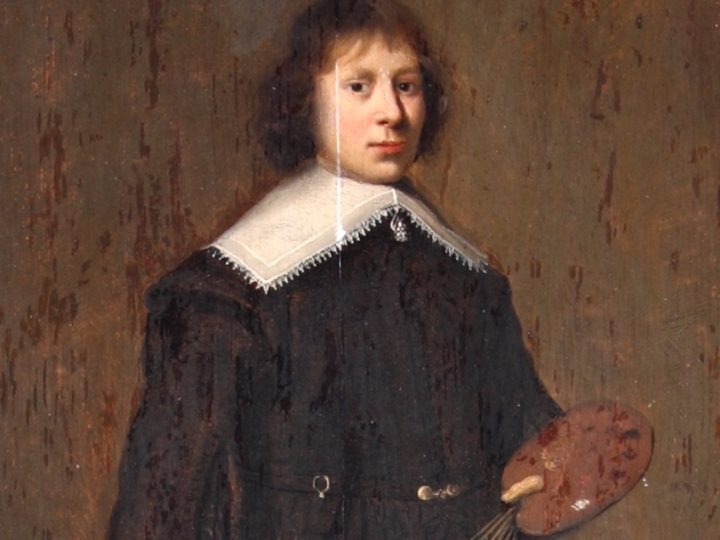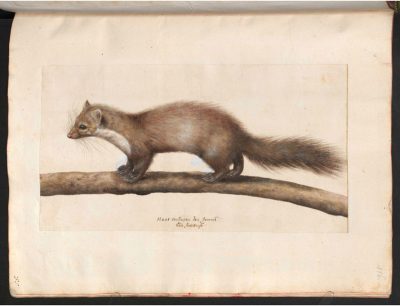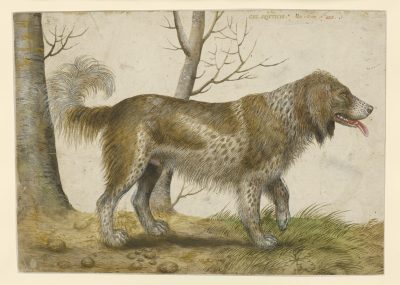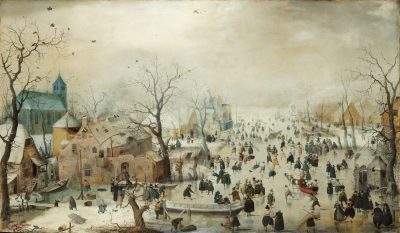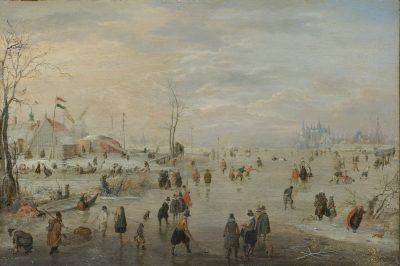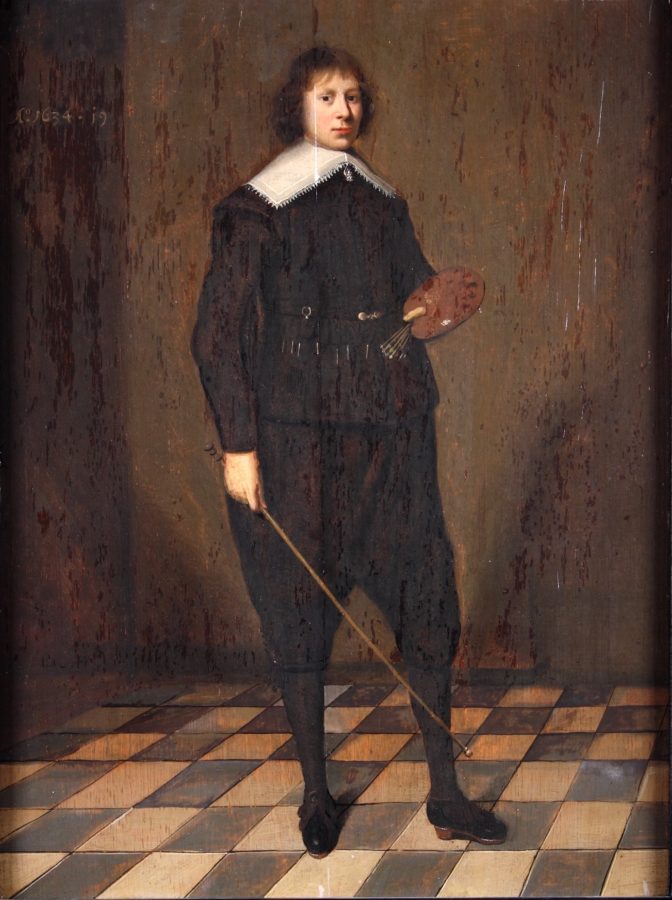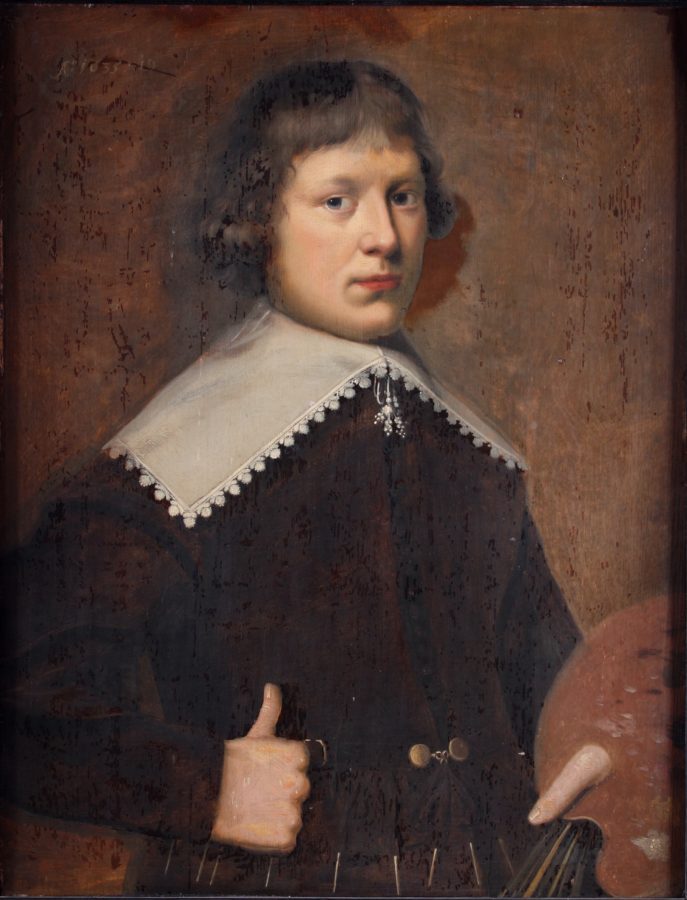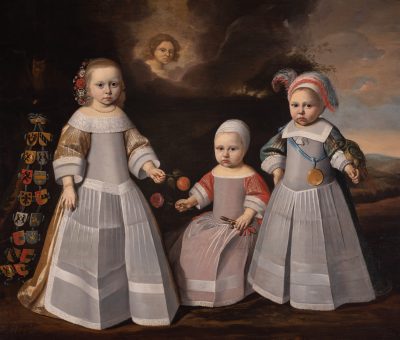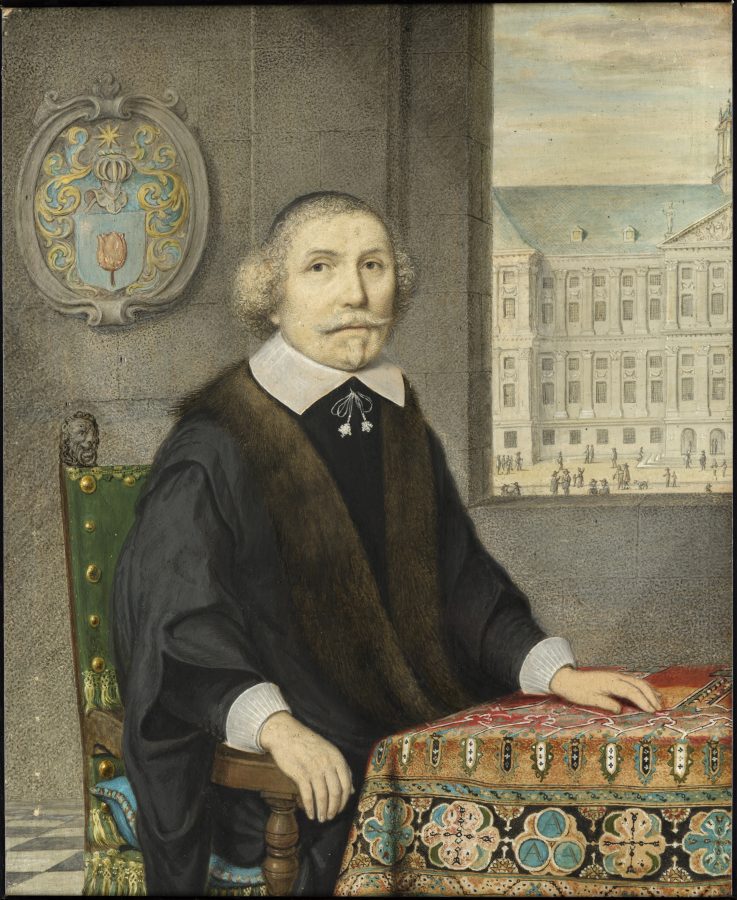The lives and careers of deaf and mute painters in the early modern Netherlands challenge the perception of disabled artists as self-taught outsiders and the assumption that a premodern experience of disability must have necessarily resulted in poverty and exclusion. Rather than approaching deafness and speechlessness as marginalizing “defects,” I propose to regard them as categories that allow us to reconsider how painting was understood in the seventeenth century. As part of that discourse, this article also examines the idea of sensory compensation, including its roots and impact on theory and historiography of art.
In his 1678 Introduction to the Academy of Painting, or The Visible World, Samuel van Hoogstraten (1627–1678) comments on Pliny the Elder’s passage on the deaf painter Quintus Pedius (d. ca. 13 CE):
The orator Messala proposed, and Augustus approved, that Quintus Pedius, who was born mute, should be taught the art of painting. Since then almost all of the mutes among people of distinction have been urged toward the art of painting, just like the blind are commonly considered most suited to music or musical instruments. I can certainly see that there is nothing more suited for mutes than the art of painting, but it does not follow therefore that mutes are better suited for it. Admittedly, their sense of sight—more or less impaired by that of hearing, as they are usually deaf—is more powerful, but they are less well disposed to being taught well. Anyway, I consider them able enough to excel in any particular part of the art, but there may well be much that they lack to become universal.1
Van Hoogstraten relies on two fundamental beliefs about deafness held by early modern Europeans: first, that a deaf person’s vision would compensate for their lack of hearing, and second, that deafness limited one’s intellectual abilities—in other words, that a deaf person would be “dumb” in both senses of the word. However, Van Hoogstraten does not embrace either belief without hesitation: he is reluctant to agree that enhanced vision alone is sufficient to make one a good painter, but he also describes deaf and mute people as “less well disposed to being taught well,” rather than impossible to educate altogether.
Van Hoogstraten’s skepticism about assumptions around prelingual deafness inspires the main questions explored in this essay. His passage moves beyond abstract historiographic topoi and approaches Pliny literally, considering deaf and mute people in his own day. The paragraph on Quintus Pedius is part of chapter one in book one of The Visible World, titled, “How Some Have Come to the Art in Very Strange Ways, and What Minds Are Capable of It,” which recounts the “accidental” discovery of artistic talent in painters such as Protagoras, Giotto, and Quentin Massys, as well as the little-known Rijckaert Aertsz (1482–1577), nicknamed Rijk-with-the-Crutch, who became a draftsman and a painter after losing his leg to an infected burn. According to Van Hoogstraten, Aertsz and Pedius were both “invited to the art” due to their “physical disposition.”2 Van Hoogstraten’s suggestion of a literal rather than a figurative reading of Pliny encourages an examination of the lives and careers of deaf and mute Dutch painters, which reveal a variety of early modern experiences of deafness and challenge the common assumptions that a disabled person must have experienced poverty and social exclusion in the period.3 Van Hoogstraten’s skepticism also encourages us to rethink, from the perspective of the history of deafness, which abilities and senses were deemed essential for the art of painting and, thus, to rethink how the visual arts were conceptualized in the early modern period. This, in turn, also necessitates an analysis of the treatment of deaf artists’ oeuvres in recent scholarship and curatorial practices. Despite voices such as Van Hoogstraten’s, twentieth- and even twenty-first-century art history has embraced, while leaving largely unexamined, the theory of sensory compensation, whose history dates back to at least ancient Greece and which posits that the loss of one of the senses heightens the acuity of the other senses. Ultimately, the intersection of a lived experience of deafness and art theory encouraged by Van Hoogstraten shows that deafness and, more importantly, deaf artists, need not be—and should not be—marginalized within the history of early modern painting. Their careers and the perception of their art provide a unique lens for the reevaluation of concepts and tropes central to our discipline, including the compensatory power of techne and the paragone of painting and poetry.
Perspectives on Early Modern Deaf Painters
In her article on deaf people in early modern England, Emily Cockayne observes that a common pitfall of research on premodern disability is its concentration on those deaf people who were wealthy and born into upper-class families.4 Admittedly, the present essay replicates this bias by focusing on those whom Van Hoogstraten referred to as “the mutes among people of distinction.” The deaf Dutch painters about whom we know more than just a brief archival mention or a signature on their works typically came from families of physicians, pharmacists, and schoolmasters who often served as elders in the Reformed Church. This privileged socioeconomic status of deaf artists was not limited to the Netherlands; as Angelo Lo Conte has shown, professional deaf and mute painters in Italy also came from families of reasonable means and were often related to established artists.5 Van Hoogstraten’s remark and what we know about the backgrounds of deaf and mute artists confirms that, in the early modern period, painting was one of the few professions available to prelingually deaf men who could not pursue careers in trade, law, or medicine that were all heavily reliant on oral and aural communication. But however selective the approach, studying deaf and mute artists helps to upend the prevalent vision of premodern people with disabilities as necessarily destitute, unemployed, and entirely reliant on their relatives’ support.
This note on the narrow socioeconomic focus of this essay must be followed by one on vocabulary. In much contemporary literature on deafness, “Deaf” is capitalized, which connotes Deafness as a linguistic minority and a cultural identity and indicates that the person in question engages with the Deaf community. Since no such community and no such identity existed in the premodern period, this article lowercases the word “deaf” when referring to the sixteenth and seventeenth centuries.6 In the rare instances when “Deaf” and “Deafness” are capitalized, they refer to modern movements, communities, and people for whom Deafness is a crucial part of their identity.
Until recently, scholarship and curatorial practices normalized the obliteration of deafness in the art world. As Nicholas Mirzoeff wrote in 1995, “If deaf artists became famous, like Francisco Goya (1746–1848) or Sir Joshua Reynolds (1723–1792), their hearing loss is rarely discussed, but if not, it is presumed that the work of these artists cannot be of importance. Art history’s definition of the canon has thus excluded the very possibility of the deaf artist.”7 Deaf Dutch and Flemish painters provide excellent examples of this phenomenon: in seventeenth-century documents, Hendrick Avercamp (1585–1634) is often referred to as either “Hendrick Avercamp d’Stomme” or simply as “Stomme” (“the Mute”). This nickname has long been lost, and most museumgoers are not aware that the artist was deaf and mute; art history textbooks likewise do not include this information. By contrast, Jan Jansz. (1615–1658) and Maerten Boelema (1611–1644), who are barely known beyond the (scarce) literature on deafness and early modern art, are typically referred to now as “de Stomme.” Those shifts in the interpretation of deaf artists’ oeuvres testify to (not always obvious) changes in the cultural perception of deafness in the discipline of art history. Twentieth-century popular culture, including movies such as My Left Foot (1989), similarly played on preexisting tropes of the alienated, tortured artist (to which not even art historians are completely immune) and taught us to expect artists with disabilities to be self-taught outsiders.
But early modern deaf artists’ careers do not follow this pattern. While none of them established large studios, their works are mentioned in period inventories, and their names are listed in guild records as apprentices and members. Registers of the Guild of Saint Luke in Antwerp list deaf and mute artists as early as the fifteenth and sixteenth centuries, although we often do not know anything about them beyond those short mentions.8 No works have been associated so far with the deaf and mute painters Gillis Stomme (listed in 1476, 1482, and 1484), Jan Stomme (listed in 1470), Willeken de Stomme (listed in 1535 as a pupil of Joos van Cleve), Henneken Stomme (listed in 1558, as an apprentice of Jasper van Kixsim, also spelled Kixsum), or Melsen (Melchior) Halders de Stomme (listed in 1558, as an apprentice of Maerten van Cleve, and in 1572 and 1585–1586).9 However, these brief mentions provide evidence that in Antwerp, at least, deafness and muteness were not obstacles to becoming a painter, even before the city became the most important center of the visual arts in the Low Countries.
There are additional examples outside of the guild records: in 1572, Daniel, a deaf and mute painter and son of the ruby cutter Jan Wraghe, was reported by his father to have been abducted and taken to England.10 In 1576, he was listed as working in Norwich for Gabriel Boulnay.11 Daniel’s works remain unknown, but that is not the case for Hans Verhagen de Stomme (circa 1540/45–1600), possibly the most influential and innovative deaf Netherlandish artist after Hendrick Avercamp, although he is not nearly as well known. Verhagen de Stomme, mentioned in the records of the Antwerp Guild of Saint Luke in 1554 and 1555 as an apprentice of Antoon Bessemers, was a pioneer of Flemish animal illustrations; his images of birds, mammals, and fish (figs. 1 and 2) are executed with great precision, sensitivity, and candor.
The combination of thin individual lines and small patches of smooth washes captures astonishingly well both the colors and the textures of animal fur and plumage, adding a haptic quality to these images. The animals are always shown in profile; in many of the gouaches, Verhagen added suggestions of their habitats, subtle enough not to distract the viewer from the detailed depiction of the animals themselves, but in other examples, he dispensed with any suggestion of the environment altogether. Given the quality and novelty of his gouaches, it comes as no surprise that they were collected and copied by early modern artists, including Hans Bol (1534–1593) and Joris Hoefnagel (1542–1601). Although Verhagen was forgotten until recently, his drawings wrongfully identified as the work of Hoefnagel, he was a part of mainstream artistic production in the sixteenth century.12 Verhagen defied now-common assumptions about the social limitations of deaf and mute people in the early modern period. For instance, he was married to Janneken Aelbrechs at the cathedral of Our Lady in Antwerp in 1572, and one of his drawings depicts the elephant that was shown in the metropolis in 1563 (fig. 3); these facts document Verhagen’s full participation in the ordinary (and, at times, extraordinary!) daily life of an early modern city.13

The two deaf artists best documented in their lifetimes and the following decades are Avercamp and Jan Jansz. de Stomme, although only the former is known to the larger public.14 In Avercamp’s case, we owe that knowledge to Clara Welcker, an archivist of the city of Kampen. Welcker built on the work of her predecessor in that office, Jurgen Nanninga Uitterdijk, who in 1879 was the first to demonstrate conclusively that Avercamp’s speechlessness was a congenital condition rather than a personality quirk, as had been previously assumed.15 Welcker herself was born deaf, to which some historians attribute her fascination with Avercamp and her quest to identify other deaf and mute early modern artists. That endeavor resulted in her book on Hendrick and Barent Avercamp, first published in 1933 and updated in 1979.16
From Nanninga Uitterdijk and Welcker, we learn that Hendrick was born in Amsterdam but moved to Kampen with his parents as a one-year-old infant. The family repeated the move to Amsterdam and back to Kampen in 1596; six years later, Hendrick’s father died in a plague epidemic. His widow, Beatrix Peters Vekemans, received the city council’s approval to run her late husband’s apothecary, and two of Hendrick’s brothers became pharmacists, while a third became a physician. On his mother’s side, Hendrick was related to a family of teachers and schoolmasters. Hendrick Avercamp is thus another example of a deaf and mute person who grew up in an affluent environment, surrounded by well-educated relatives who, even if they did not understand the physiological etiology of his deafness, must have been able to assist him in obtaining an education and developing a system of communication. It was also undoubtedly thanks to the family’s wealth and their connections in Amsterdam that Avercamp could relocate there to study painting with the Danish history painter Pieter Isaacz. (1569–1625). Unfortunately, since the records of the Kampen Guild of Saint Luke were lost in 1798, we do not know who Avercamp’s first teacher was.17 In the early 1600s, Amsterdam was saturated with exiles from the Southern Netherlands and artists who studied with Antwerp landscape painters, and Avercamp would have had easy access to works by Gillis van Coninxloo (1544–1607), Bol, and David Vinckboons (1576–1632), to name just a few. Avercamp moved back to Kampen in early 1613 at the latest, but his works appear in inventories of Amsterdam and Antwerp collections throughout the 1600s and early 1700s.18
Despite his success, Avercamp probably did not earn enough to make a living. In 1633, his ailing mother wrote a petition to the city council, requesting that her son should be entitled to the annual pension of one hundred guilders. This special petition was necessary to secure Avercamp’s financial future, as laws in early modern Europe often prevented deaf and mute people from inheriting and owning property.19 The same annual sum of money reserved from Beatrix’s pension for Hendrick was then confirmed in her last will. In addition to the legal implications of the 1633 provision, the language used by Beatrix requires our attention: she refers four times to Hendrick as “haeren stommen ende miserabelen soene” (her mute and miserable son). The adjective miserabelen, sometimes translated as “wretched,” has been interpreted as a description of Hendrick’s necessarily unhappy life, forced on him by his muteness.20 However, this interpretation is a product of a common modern misunderstanding of what the life of a deaf and mute person must have been like before the advent of formalized sign language and schools for the Deaf. The context of Beatrix’s words—an official document that engaged with her son’s fraught legal position—is an unlikely place to reflect on the psychological implications of a child’s impairment. Bikker has suggested that perhaps the word miserabelen meant that Hendrick was ill at the time his mother made the petition, since he died only five months after the document was written.21 But if that was the case, Hendrick’s illness must not have seemed too grave to his mother, since the years-long provision and the affirmation of the pension in her last will would not have been necessary if she perceived his death to be imminent. It is much more likely that miserabelen referred to Hendrick’s financial situation and implied that he could be forced into poverty by his limited legal rights, while its repeated usage might also suggest that his mother wished to bolster her request by appealing to council members’ empathy.
The debates around the “stommen ende miserabelen soene,” alongside the prevalent understanding of painting as an exclusively visual domain, have resulted in an ableist or, at best, romanticized vision of Avercamp’s life and oeuvre. The painter’s detailed compositions have been attributed to his heightened sense of observation, supposedly practiced since childhood in “forced isolation.”22 However, Avercamp’s precise style (figs. 4 and 5) is also consistent with the tradition of Flemish landscape painting mentioned earlier, especially the oeuvre of David Vinckboons (fig. 6). Avercamp’s color palette is more muted than that of Vinckboons, with predominantly earthen tones that capture the dull winter light, but we find in his compositions the same attention to individual figures and the same liveliness of their interactions in small groupings scattered across the image. And while the specific subject of a winter landscape filled with ice skaters was relatively new, at its essence, this genre continued the Flemish interest in depicting public celebrations and merrymaking occasioned by village kermises and peasant weddings.
It was Clara Welcker who first emphasized the supposed implications of Avercamp’s impairment for his life and art. She described him as an outcast “armed with chalk or pencil and sketchbook to record the remarkable things he observed, things that interested him,” who as a child marveled with his eyes at all the wonders around him; this silent contemplation, Welcker argued, contributed to the “inner richness” of his life.23 Welcker concluded that, despite Avercamp’s participation in the ordinary practices of his profession—above all, his apprenticeship with Isaacsz. in Amsterdam—by the very nature of his impairment, he must nevertheless have occupied an isolated place in his family and in society.24 Welcker’s interpretation sits at the intersection of medical and social models of disability. While she refers to Avercamp’s deafness and muteness as a “defect” (suggesting that she perceived her own deafness as such), she also assumes that he must have been excluded from his surroundings due to the lack of institutional care in the seventeenth century, when, in her words, a prelingually deaf and mute child “was simply lost to the community.”25
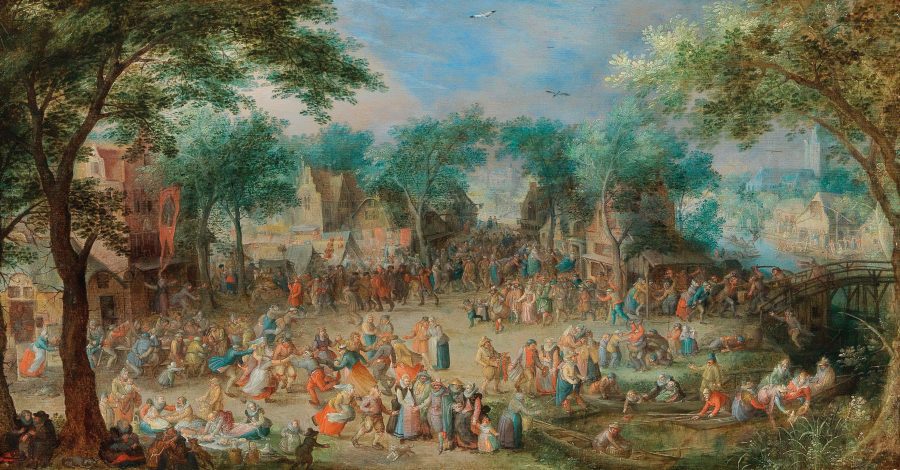
Documentation of the life and career of Jan Jansz. de Stomme further reveals that such modern assumptions about the lived experience of disability in the premodern period are often misguided. Born in Franeker, Friesland, as the son of the city’s mayor, Jan Jansz. probably studied first with Wybrand de Geest (1592–after 1660), who married the second cousin of Saskia van Uylenburgh, Hendrickje Stoffels, in 1622.26 This connection to Rembrandt van Rijn (1606–1669; Van Uylenburgh was his wife; Stoffels his partner after Van Uylenburgh’s death) gives some credibility to the information included in the family chronicle by Frans der Kinderen, grandson of Jan’s sister Trijn Jan Voogelesang, that Jan Jansz. spent some time living and studying with Rembrandt in Amsterdam. The suggestion could be a self-serving fabrication to enhance the family’s prestige, especially if they still owned any of Jan’s paintings. Der Kinderen’s chronicle asserts that Jan’s family did not need to pay for his apprenticeship, because Rembrandt had never had less trouble with anyone.27 Such an agreement would be surprising. An apprenticeship with Rembrandt was expensive: in 1630, Isaack de Jouderville paid a total of one hundred guilders for one year of instruction “in the art of painting.”28 Der Kinderen, who himself was a draughtsman and a jeweler, does not say anything about how Rembrandt might have instructed a deaf student, suggesting that he regarded his relative’s impairment as inconsequential to his education and career.
Even if, as Ben Broos has recently argued, there is nothing “Rembrandtesque” in Jan Jansz.’s portraits, and if the apprenticeship seems unlikely, Der Kinderen’s chronicle is an important source of information on early eighteenth-century perceptions of deafness.29 Another anecdote illuminates the complex relationship between deafness, religion, and spiritual authority in the Dutch Republic. According to the chronicle, Jan Jansz. became a member of the Reformed Church; he was interviewed by a minister who, with Jan’s sister serving as interpreter, established that Jan had sufficient knowledge of doctrine to join the Church.30 Der Kinderen’s testimony is corroborated by Samuel Maresius, a theologian at Groningen whose portrait Jan painted circa 1653, and who wrote in his Systema Theologicum about a talented deaf and mute painter who demonstrated his understanding of the faith through gestures. Anton Deusing, a German physician hired as the first professor of medicine at the University of Groningen, likewise mentioned a local deaf and mute painter who regularly attended church services and talked about religion with his wife and his servant.31 Maresius and Deusing both used Jan to demonstrate the intellectual abilities of deaf and mute people and their access to salvation—which was not taken for granted—but it would be wrong to call what they did a tokenization of his disability. In fact, unlike many thinkers of their day, Maresius and Deusing based their observations not on abstract philosophical notions but rather on lived experience, witnessed firsthand.
While Avercamp remained a bachelor his whole life, Jan Jansz. was married twice, and, as Der Kinderen is careful to mention, neither of his wives was “too ugly.” The comment is not unlike the narrative choices of books and movies, in which the disabled character is ultimately validated by attracting a love interest.32 Jan’s first wife, Catharina Solingius, died only fifteen or sixteen months after they married on August 19, 1648. According to the probate inventory prepared by her brother in January 1650, the couple was quite wealthy and owned, among other possessions, books and items for a baby.33 Such objects suggest that, first, Jan might have been literate, and, second, that Catharina died, together with the couple’s first and only child, soon after giving birth.34 On May 18, 1650, Jan Jansz. married Aaltje Stevens, with whom he had two daughters, Petertien and Jantjen; the family lived at Herestraat, the most expensive street in Groningen.35 Jantjen and her parents died in 1657 or early 1658, as in January of that year Petertien was assigned a guardian. She died childless in 1695.36
These primary sources confirm that Jan was integrated into society and able to participate in his family’s wealth without the special provisions that seem to have been necessary in the case of Avercamp. In contrast to aristocratic families in Spain, where rates of congenital deafness were high and deaf children were frequently hidden from the public eye and sent to convents, the mayor of Franeker must not have considered a deaf and mute son a stigmatizing impediment to his political career or the social status of his family. Jan Jansz. married twice, had children, and maintained an affluent household while establishing himself as a sought-after portrait painter in Groningen. His choice of specialization suggests that gestural communication between an artist lacking verbal speech and his clients could foster a successful collaboration and, more broadly, be accepted as a basis of social interaction. Jan was an active member of the Reformed Church, admitted to the holy communion despite the denomination’s emphasis on oral/aural communication, and he ensured the religious instruction of his family.
Whether Jan considered his deafness to be a meaningful aspect of his personality and artistic career is impossible to answer beyond mere speculation, as he did not leave any first-person documents such as a diary or letters, and his two surviving self-portraits depict only the tools of his trade and his physiognomic likeness. The earlier of the two paintings, inscribed “A°. 1634. 19” in the upper left corner, shows the nineteen-year-old artist standing on a black-and-white checkered floor in an empty room (fig. 7). Holding a palette, brushes, and mahlstick, Jan looks directly at the viewer. Dressed in simple black attire with a white collar, he is shown in half-profile, with the light hitting him from the left and casting a shadow on the wall to the right side of the painting. The second self-portrait is dated “A°. 1635 19” in the same spot in the upper left corner and is a half-length variation of the earlier composition (fig. 8). However, Jan’s face is more detailed here, with slight wrinkles in the corner of his eye, and its chiaroscuro modeling is better executed, creating a more convincing effect of three-dimensionality; these differences might be attributable to the much better state of preservation of the 1635 painting. Jan would repeat the compositional formula he employed here—a half-profile view of a half-length figure against a uniform dark background (fig. 9)—in dozens of later portraits. In a few cases, most notably Portrait of the Three Children of Tjarda van Starkenborgh (fig. 10), Portrait of a Girl (1656; Groninger Museum), and Portrait of Bouwina Coenders van Helpen with Daughters (fig. 11), the sitters are positioned against landscape backgrounds, exchanging subtle gestures of familial affection among themselves.
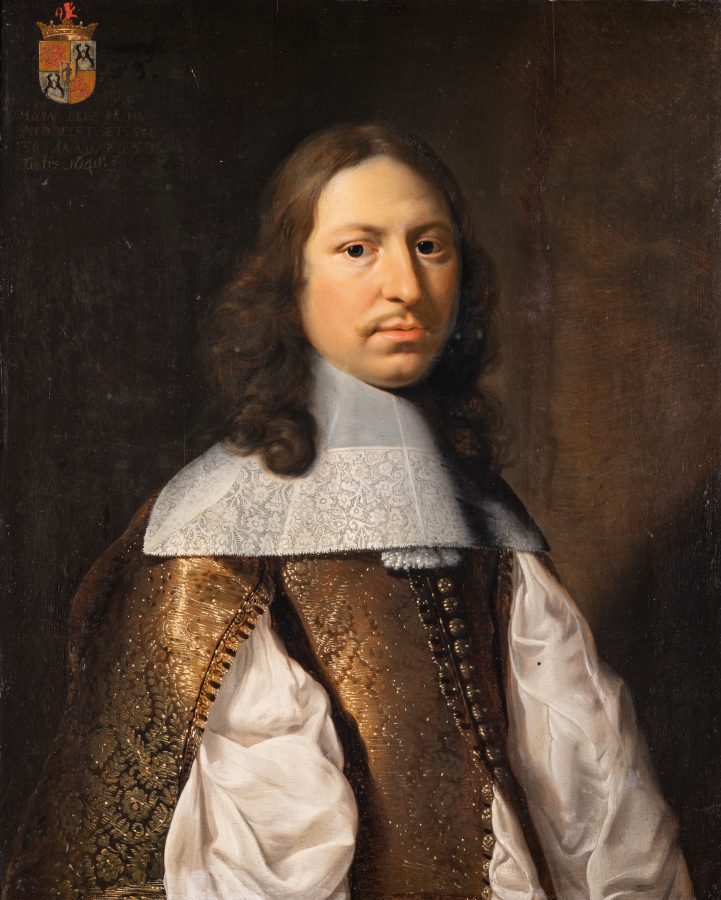
Friesland was also the birthplace of Maerten Boelema de Stomme (1611–after 1644), a son of a lawyer in Leeuwarden. A painter of ontbijtstukken (still-life paintings of food), Boelema is listed in 1642 as one of the three apprentices of Willem Claesz. Heda (1594–1680) in Haarlem, and, in 1644, as a member of the local Guild of Saint Luke (fig. 12). Twenty-four years later, in 1668, the Haarlem guild records mention another deaf and mute painter, Johannes Thopas (1627–1695), whose work was the focus of a 2014 exhibition at the Rembrandt House Museum. Thopas’s early life was similar to Avercamp’s: a son of a physician in Arnhem, he lost his father, likely during a plague epidemic, at the age of six. His mother remarried in the same year, and Thopas’s stepfather was likewise a physician, who also served as a burgomaster of the city of Emmerik.37 Like Jan Jansz., Thopas joined the Reformed Church—the special procedure through which the church council had him admitted in 1650 once more shows that such membership was not necessarily a given for a deaf and mute person38—but unlike Jansz., he never married and continued living with his relatives throughout his life. This was an obviously practical social and economic arrangement, especially considering the ambiguous legal position of deaf and mute people in early modern Europe. With his sister and brother-in-law, Thopas lived in Utrecht, Amsterdam, Haarlem, and finally Assendelft.39 While he made a few oil paintings, Thopas specialized primarily in small portrait drawings, with the occasional addition of watercolor.
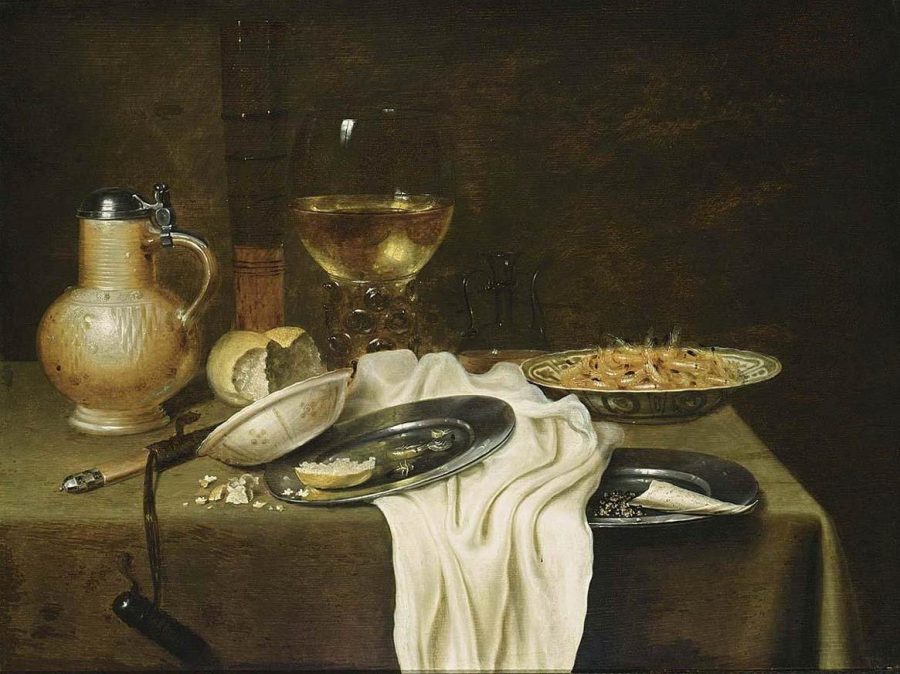
In the context of this essay, the most noteworthy among Thopas’s works are the portraits of Nicolaes Tulp and his second wife, Margaretha de Vlaming van Outshoorn, created around 1660 (figs. 13 and 14). As Amsterdam’s chief surgeon, Tulp was interested in deafness and muteness, which he mentions twice in his Observationes Medica. First, he reports the case of adventitious deafness (accidental deafness that occurs after the development of speech) in a man “who had grown so deaf that it was no longer possible to make oneself heard, but who was forced to write anything he wished to communicate down in a notebook,” and who was cured by consuming hare’s urine mixed with brandy.40 Second, Tulp describes one Simon Dirksen, who followed sermons and conversations by lip reading. But while Dirksen’s hearing loss was permanent, it was not inborn: according to Tulp, Dirksen experienced its irreversible onset after he fell from a tower.41 Lip reading, as described by Tulp, is more common among those with adventitious deafness than prelingual deafness, which renders this method extremely difficult and limited. Tulp published the first edition of his treatise in 1641 and the second in 1652—both before he met Thopas—and so we do not know what impression that meeting left on the surgeon.42 Thopas’s portrait of Tulp, then in his sixties, shows him seated at a table, his coat of arms on the wall behind him, with a view of the new Town Hall seen through the window above the table. A corner of the Town Hall and the entrance to the Nieuwe Kerk at Dam Square can be seen in the pendant portrait of Margaretha de Vlaming van Outshoorn. The portraits focus on the couple’s social status: Margaretha came from a noble family, and her father served four terms as the mayor of Amsterdam, while Nicolaes served as a magistrate and mayor of Amsterdam who oversaw the building of the Town Hall. The paintings are compositionally very similar to Thopas’s portraits of the merchant and sugar refiner Jan Wijs; his mother, Catharina de Marez; and his wife, Maria Soolmans, all of which were completed in 1657 and are currently in the Six Collection. These five images demonstrate Thopas’s skills at rendering bustling scenes of city life in background vistas, his expert understanding of perspective, and his ability to achieve illusionistic grisaille effects, as shown in the fruit garlands behind Wijs. The diversity of Thopas’s skill set suggests that he, too, had access to formal artistic training rather than being a self-taught amateur. Most important, these works prove that Thopas’s deafness and speechlessness did not prevent him from working for the financial and political elite of Amsterdam. Even if the philosophical discourse of the day harbored bias against congenitally deaf people who lacked verbal speech, those notions did not necessarily translate into bias against specific individuals.
Nevertheless, the 2014 Rembrandt House exhibition presented Thopas through the prism of his deafness as a source of visual prowess, just as Avercamp had been described for decades. A promotional video for the exhibition—which, in an important accessibility move, featured a Dutch Sign Language interpreter—proposed that some of Thopas’s works “could have only been created in silence, to the exclusion of everything else,” and argued that the absence of audible distractions helped Thopas create his “timeless portraits.”43 While the exhibition was an important step toward highlighting the careers of seventeenth-century deaf and mute painters, the conclusions proposed by the video perpetuate the vague notion of sensory compensation and suggest that Thopas must have experienced it, despite the lack of any evidence that Thopas perceived his impairment that way.
This essay can offer few reflections, and those only provisionally, about these deaf and mute artists’ self-perception, as none of the congenitally deaf Dutch painters discussed here have left any written records, and the two surviving self-portraits by Jan Jansz. likewise do not visibly address his impairment. But first-person documents by other authors with disabilities create a diverse picture of experiences of deafness. Some individuals who experienced hearing loss later in life indeed often perceived it as isolating and used not only writing but also drawing as a form of communication;44 some would grow to resent their relatives’ stubborn search for a cure (a phenomenon that is also common in the twenty-first century); and, later, others benefited from the opportunities offered by access to deaf education and opportunities to establish professional careers.
In the early nineteenth century, at the dawn of Deaf culture, the American portrait painter John Brewster Jr. (1766–1854) referred to his disability and the necessity of living in an exclusively hearing environment as his “unfortunate situation”; once the first school for the Deaf opened in 1817 in the United States, Brewster spent three years there, despite being in his early fifties and already having a successful painting career.45 In the early twentieth century, the British American painter Dorothy Brett compared her progressive hearing loss to being in prison and living a life of “looking through a shop window or a restaurant window,” adding “it is all so hideous I sometimes wonder if it were not for my paintings I would end it all.”46 As her hearing loss worsened, Brett became an avid user of a flat tin ear trumpet she affectionately named Toby and continued to use a hearing aid throughout her life.47 She never claimed that hearing loss enhanced her vision but rather associated it with oppressive isolation, within which painting provided her with a sense of solace.48 By contrast, some of the multimedia artists, designers, and directors interviewed for the 2014 volume Deaf Gain: Raising the Stakes for Human Diversity agree that “Deaf people have more advantages as a group, because they’re more visual.” While Deaf culture has certainly shaped modern perception of d/Deafness, experiences of disability have always been socially constructed and dependent on one’s environment. We should not expect of early modernity a singular “ideal deaf painter” but rather a variety of possible responses to one’s deafness and muteness, shaped by factors such as economics, religion, class background, and family and professional circumstances. It is possible that some painters accepted and internalized the period’s notions of sensory compensation, but we lack conclusive evidence to support this assumption.
Learned Hand and Crippled Paintings: Muteness, Gestures, and the Hierarchy of Senses
The lack of evidence about early modern deaf artists’ self-perceptions correlates with a certain disjunct between the market presence of deaf and mute painters and seventeenth-century art theoretical writings. Names of early modern deaf artists appear in inventories, guild records, and legal and family documents, such as Der Kinderen’s chronicle and Avercamp’s mother’s petition, but they are not included in contemporary art treatises. The authors of those texts were more interested in classical references to deafness and speechlessness, like Pliny’s passage on Quintus Pedius, which offered opportunities to reflect on the compensatory power of the visual arts within debates about the hierarchy of the senses. Among those reflections, one of the most intriguing ones comes from the Dutch edition of Franciscus Junius’s Painting of the Ancients in Three Books (1641).49 Junius reads the Plinian passage on Quintus Pedius as an example of the compensatory power of visual arts. Following the translation of Pliny’s Natural History, he comments that it is “a wonderful thing” that “speechless mute people can overcome the defect of their nature with the help of drawing.”50 More important, Junius uses Pliny to conclude with and apply to painting an Ovidian story that illustrates the power of art—techne—to overcome disability. In Book VI of The Metamorphoses, Procne, an Athenian princess married to King Tereus of Thrace, wishes to see her sister Philomela. Tereus offers to escort Philomela to Procne, but on the way from Athens, he rapes her. Because Philomela refuses to stay silent about his crime, Tereus cuts off her tongue, imprisons her, and, on returning to his wife, claims that Philomela died. Lacking a physical voice, Philomela makes a tapestry or an embroidery—Ovid and Junius are both vague on the exact nature of this object and what exactly it depicted—and has it delivered to her sister. Quoting Achilles Tatius, Junius tells us that Philomela “found a silent voice” in her textile, and her sister Procne understood with her eyes what she could not hear with her ears.
Pedius’s and Philomela’s impairments are fundamentally different: the former is prelingually deaf and mute, while the latter never loses her hearing, only the power of speech. His was a congenital disability; hers was an adventitious one. By juxtaposing these two narratives, Junius shifts the focus of the early modern artistic discourse on deafness to speechlessness. This emphasis on muteness rather than deafness is further reinforced by the order in which the two stories are told. In Junius, unlike in Van Hoogstraten, the visual arts take on a compensatory role as a substitute for verbal speech, equating them with language; the artist is neither aided nor hindered by deafness. In Philomela’s case, the compensation happens between speech and gesture rather than hearing and vision: the hand becomes the instrument of communication. This is an unusual approach, since both in the early modern period and in modern art historical scholarship, any presumed advantage related to the powers of observation that a deaf painter might have over his hearing peers was generally attributed to his lack of hearing.
Long before modern research on the cross-modal neuroplasticity of the brain, sensory compensation was bolstered by premodern ideas about a finite number of spirits that “animated the material body.”51 Similarly, the twentieth-century superhero Daredevil—who, in the accident that causes his blindness, acquires heightened sensory acuity—has his predecessors in the Greco-Roman gods and prophets Hephaistos, Tiresias, and Demodokos.52 Classical culture does not offer an explanation for the theory that impairment in one of the senses or parts of the body should result in enhanced abilities elsewhere, but the belief in compensation has nevertheless become ubiquitous in the Western tradition.53 By contrast, the premodern theory of spirits was straightforward: a blind person would not use the spirits assigned to seeing, and a deaf person would not use the ones assigned to hearing, and thus those spirits were at the disposal of other senses, as their overall number was fixed.54 Mutually reinforcing each other, the classical examples and the theory of spirits have merged into a widespread expectation of heightened visual discernment among the deaf population and, to this day, an assumption that d/Deaf people must necessarily be visual learners.
Junius resisted those theories. His interest in the hand—rather than the eye—as a compensatory instrument of communication encapsulates two ideas around oral speechlessness and the visual arts: the docta manus (learned hand) topos and the idea of sign gain (enhanced visual awareness associated with the use of sign language). Junius draws from early modern art theory while anticipating Enlightenment theories of deafness and communication and, finally, contemporary experiences of d/Deafness. Some of the artists interviewed by Jennifer Grinder Witteborg in her essay for Deaf Gain question the supposed compensation commonly associated with hearing loss, suggesting that any visual advantage they experience over their hearing peers should be ascribed to their use of sign language rather than the absence of hearing—although that advantage might be limited to native Deaf signers only, i.e., people for whom sign language is their first language.55 This idea of sign language, whether formalized or relying on a more intuitive system of gestures, as a source of visual acuity—as well as a set of skills that can be beneficial to hearing individuals, and painters in particular—is not new. Leonardo da Vinci (1452–1519) praised the benefits of painting and drawing for deaf and mute people, for whom (he observed) it is a source of much delight, and which they can understand as well as their hearing peers.56 Conversely, in his Trattato della Pittura, Leonardo suggests that deaf and mute peoples’ gestures and facial expressions could serve as a model for painters and “will teach you better through facts than will all the other masters through words.”
The affinity of sign language and painting as systems of visual communication was a subject of lively debate among eighteenth-century French and British academics. Although many followed Leonardo’s thinking that a painter can and even should learn the language of gestures from a deaf person, others opposed this idea. Among its vehement critics was Sir Joshua Reynolds who considered the gestures of deaf and mute people to be crude, vulgar, and exaggerated.57 Reynolds himself lost the hearing in one of his ears in his mid-twenties, in the aftermath of a severe cold, and used an ear trumpet for the rest of his life.58 Around the same time, abbot Charles-Michel de l’Épée (1712–1789) turned to painting to understand its compositional principles that could be abstracted and applied to signing in order to transform it into a “methodical” system. Although the early modern period saw the first (successful) attempts at the formal education of deaf and mute students, such opportunities were limited to affluent families. It was only De l’Épée who considered educating non-elite deaf children as well and opened the first school for deaf people in Paris in 1755. In 1776, De l’Épée reflected on the need for structure in sign language and painting alike. In the latter, he wrote, such a structure was provided by rules of composition:
Painting is a mute art, which only speaks to the eyes, and the skill of the artist consists in knowing how to attract the gazes of spectators, fixing their attention on his work and deserving their praise. . . . Like painting, the art of methodical Signs is a silent language which only speaks to the eyes. . . . However, after this explanation, where have we got to? We are no more advanced than a Painter, who might have in his studio eyes, noses, ears, mouths, hands, and feet represented on the canvas with all the force and the delicacy of his art. I went to an artist’s place looking for a picture in his style made up of several figures; and I could not find even one whole figure there.59
Almost 250 years before De l’Épée, and nearly five hundred before the idea of sign gain, European humanists and artists popularized the trope of a painting so lifelike it only lacked a voice. The praise was common in the circle of Erasmus of Rotterdam. The Dutch scholar Alaard of Amsterdam described in laudatory terms the 1532 profile woodcut of Erasmus by Hans Holbein the Younger: “So vividly has the Leiden hand depicted Erasmus that, but for the voice, the likeness is alive.” The French theologian Gilbert Cousin wrote about the same image in a similar tone: “If the artist’s hand had rendered the voice in the same manner, you would simultaneously have also seen the portrait of his mind.”60 This limitation of the medium and the learned hand that practiced it was also noted in the inscription accompanying Albrecht Dürer’s engraved portrait of Philip Melanchthon from 1526, which contends that “Dürer could paint the features of Philip from life, but his skilled hand could not paint his mind” (Viventis potuit Durerius ora Philippi. Mentem non potuit pingere docta manus) (fig. 15). Ultimately, the topos of a painting so lifelike that it only lacks a voice found its most famous expression in the epigram composed by Joost van den Vondel on Rembrandt’s 1641 Portrait of Cornelis Anslo and his Wife Aaltje Schouten (fig. 16):
O Rembrandt, paint Cornelis’ voice!
The visible part is the least part of him;
The invisible is known only through the ears;
He who would see Anslo must hear him.61
Anslo’s near-frontal face and half-opened mouth were standard attributes of a speaker in seventeenth-century Dutch art, recommended by artist and theorist Willem Goeree (1635–1771).62 But according to Van den Vondel, even paired with the attentive pose of Anslo’s wife, Aaltje Schouten, they were not sufficient to convey the preacher’s persona.
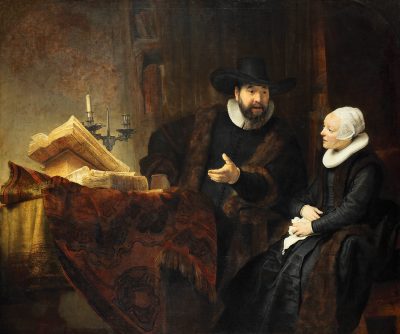
In the humanistic discourse of early modern Europe, the absence of voice makes the painting defective; the medium itself is considered crippled. Only rarely do we find comments such as those of Cornelis Agrippa, who in The Vanity of the Arts and Sciences (1526), his paragone of painting and poetry, considered the former to be superior, as it possessed the ability to deceive the beholder. In addition to depicting ephemeral phenomena such as clouds and fire, painting has the power to depict “the passions of men and the feelings of the soul, almost representing the voice itself.”63 Despite his credentials as an art theoretician rather than a practicing artist, Junius also sided with visual artists rather than poets when alluding to the docta manus trope. In The Painting of the Ancients, he used the story of Philomela to argue that the visual arts—and the artist’s hand that creates them—have the power to speak to the eyes in complex narratives and call the viewer to action. On seeing her sister’s embroidery, Procne frees Philomela and sets out to avenge her rape. That neither Ovid nor Junius specifies what exactly the image Philomela created looks like is significant: while the circle of Renaissance humanists used the trope of voiceless portraiture to comment on verisimilitude, Junius understood that the potential of the visual arts transcends mimesis. The learned hand of an artist substitutes for the power of speech and endows “mute paintings” with imperceptible power. At the end of Ovid’s tale, Philomela regains her voice when she is changed into a nightingale, a symbol of poetry. The hierarchy of arts sought by humanists is restored, but the pivotal point of the tragedy was nevertheless orchestrated by an image.
Van den Vondel’s poem implicitly suggests that hearing is a more noble sense, and a more important instrument of cognition, than sight. And if hearing precedes seeing, then painting must be considered inferior in the paragone of painting and poetry; as J. A. Emmens noted in his essay on Van den Vondel and Rembrandt, the hierarchy of word and image corresponds with the hierarchy of hearing and seeing.64 But even if hearing was considered the primary sense of learning, the thinking went, it needed to be accompanied by and expressed through other senses to be effective in the acquisition of knowledge and the formation of memory—as in Rembrandt’s double portrait, where Schouten’s mouth is slightly open while she squeezes the handkerchief in her hand.65 The multisensory nature of hearing was nowhere as evident as in early modern preaching. If Van den Vondel bemoaned Rembrandt’s inability to “paint Cornelis’ voice,” a seventeenth-century churchgoer would have probably been even more disappointed if presented with a written copy of Anslo’s sermon. A good sermon needed to be performed, and its performance should include both oral and gestural components.66 As Rosamund Oates has argued, preachers’ use of gestures helped to facilitate the dissemination of sign language as an acceptable and intellectually satisfactory system of communication.67 Many of the gestures used in sermons had been standardized for centuries in rhetorical handbooks that would have been used in Latin schools, and in the English philosopher John Bulwer’s Chirologia and Chironomia, complementary manuals describing and illustrating gestural communication, first published in London in 1644. But Anslo’s outstretched hand, the incontestable fulcrum of the composition, does not correspond with any of those conventionalized gestures: Anslo’s docta manus is as elusive in its power as Rembrandt’s.
“Much that they lack to become universal”: What Makes a Good Painter?
Without negating the idea of a compensatory power of vision in deaf people, Samuel van Hoogstraten rejected the common belief that they are better predisposed to painting than their hearing peers, blaming their supposed inability to learn well. The comment needs to be considered within the long tradition that associated congenital deafness with dumbness, of which the latter’s dual meaning as “speechlessness” and “lack of intelligence” is the most glaring and perhaps the longest-lasting vestige. Both Aristotle and Galen believed that hearing and speech were produced by the same region of the brain; consequently, any damage to that region must necessarily lead to a lack of both abilities. For Aristotle, hearing was also the seat of learning, and the absence of speech therefore equated to the absence of understanding and intellect. Because of the connection between hearing and learning, hearing was for Aristotle more valuable than sight, from which it followed that a blind person would be more intelligent than a deaf person.68 But Van Hoogstraten stopped short of comparing prelingually deaf and mute people to infants or “dumb animals,” as was not uncommon at the time;69 he denied only their ability to be taught well rather than to be taught altogether. His position might be indicative of a transitional moment in the early modern history of deafness: the sixteenth and seventeenth centuries saw the first successes in educating prelingually deaf children, which, although limited to the elite classes, nevertheless proved their ability to learn and understand.70 Lutheran and Reformed churches began allowing deaf and mute members to partake of the Eucharist,71 and they could get married and make wills.
Despite these changes, misconceptions about deaf and mute people persisted. Crucially for Van Hoogstraten’s treatise, hearing was also perceived as the seat of memory, both in theoretical debates and when describing difficulties experienced by deaf and hard of hearing people. Two phenomena intersected in those debates: first, the conclusion drawn by some that, given congenitally deaf and mute people’s presumed lack of understanding, they did not possess the capacity for abstract thought;72 and, second, a belief that any hearing loss would affect one’s ability to memorize what one had learned or witnessed. As Anna Kvicalova has shown for sixteenth-century Geneva, preachers and members of John Calvin’s Consistory routinely linked hearing difficulties to their parishioners’ inability to retain the content of sermons and formulate an understanding of the new doctrine—a failing they often perceived in the congregants they interrogated about the precepts of the Reformed Church.73 In England, preachers likewise understood active, engaged hearing as an aspect of memory.74 The connection between hearing and memory loss was also upheld by John Bulwer, who otherwise rejected the theory about the alleged “dumbness” of mute people.75
While the short passage about Quintus Pedius is the only one in which Van Hoogstraten concerns himself with deafness and muteness, the early modern prerequisites to become a good painter are inherently linked to contemporaneous debates about memory and the acquisition of knowledge. As Celeste Brusati asserts, for Van Hoogstraten, “the mainstay of the painter’s academic” was the practice of drawing from life, naar het leven, and drawing from the mind, uit den geest—in other words, “the memory of things seen”—and the ability to seamlessly bring these two skills together.76 A deaf and mute person, Van Hoogstraten’s contemporaries would argue, must necessarily be less capable of activating “the memory of things seen” and of creating such memories in the first place. This is crucial in the context of Van Hoogstraten’s definition of art, which saw “the crafting of pictures” as a cognitive endeavor in itself.77 To fulfill painting’s ultimate aspiration—studying and representing “all that is visible”—one ought to become a “universal painter,” equally skilled in all pictorial genres and conversant in the liberal arts.78 The mastery of painting understood as this kind of total art, or “universal science,” was thought to be beyond grasp of deaf people, who, according to Van Hoogstraten, were “able enough to excel in any particular part of the art” but lacked the capacity “to become universal.”79 Van Hoogstraten here taps into the period belief that deaf people were unable to formulate abstract thought and, therefore, go through the rigorous training that painting requires.80 Thus, in a system that sees painting as an epistemic endeavor and hearing as the primary means of gaining knowledge, deafness is a true impediment rather than an enhancing mechanism.
It is possible that Van Hoogstraten’s conviction about the necessary inferiority of deaf and mute painters was informed by his perception of the contemporary Dutch art market. None of the deaf Dutch artists practiced history painting, which, in this highly specialized market, was not particularly unusual. But for Van Hoogstraten, the ever-increasing specialization and compartmentalization of genres was in itself a deplorable change. As Van Hoogstraten argues in book three of The Visible World, universality in painting could only be achieved in history painting, because it called for mastering the ability to represent all visible things. Crucially, Van Hoogstraten’s rejection of the belief in the special predisposition of deaf people for the visual arts illuminates his understanding of the most rudimentary aspect of the imitation of art and nature. As was customary, the author “recommends thoughtful and copious drawing after nature, prints, and drawings,”81 tasks at which, as twentieth- and twenty-first-century art history has claimed, deaf artists such as Hendrick Avercamp and Johannes Thopas excelled. However, in the definition of art cultivated by Van Hoogstraten, even the task of copying from nature required discernment beyond mere observation, which invalidates narratives about sensory enhancement.
Despite The Visible World’s reliance on Junius’s Dutch edition of The Painting of the Ancients and its copious employment of classical tropes, Van Hoogstraten does not mention the story of Philomela and Procne. Junius, as we saw, connects this story about the compensatory power of the visual arts to Pliny the Elder’s passage on Quintus Pedius, without differentiating between congenital deafness/muteness and adventitious speechlessness. Philomela’s virtuoso feat of creating a tapestry that clearly and persuasively tells a story that moves her sister to action is an example of “universal art,” embodying the complexity of the kind of pictorial representation Van Hoogstraten argues mute people could not create. Philomela mobilizes her manual skills to create a conceptually elaborate narrative; although its visual form remains a mystery, the tapestry achieves its epistemological goal. At the end of Ovid’s chapter, Philomela is transformed into a nightingale, the symbol of poetry, her speechlessness now reversed and her beautiful voice once again her means of expression. While, to my knowledge, this relatively little-used narrative from the Metamorphoses was never invoked in Renaissance and Baroque art theory as an illustration of the ut pictura poesis trope, it would be difficult to find a more direct metaphor of the kinship between the two arts, in which one directly substitutes for the other.
In addition to cognitive and mnemonic deprivation, a deaf painter might have been considered lacking in yet another regard. As is well known, early modern and especially seventeenth-century Dutch paintings were multisensory objects: they were meant to appeal to viewers’ senses of smell, touch, hearing, and taste, both when incorporating personifications and symbols of the five senses and when merely alluding to senses other than vision. It should follow from this that the ability to translate multisensory experiences into pictorial language would have been a necessary skill in a painter. Praising painted flowers by Daniël Seghers (1590–1661), Constantijn Huygens wrote, “with oil Father Seegers / Creates, in his painting, the fragrance of roses.”82 Although one might expect it to be the viewer’s imagination that translates the visual perception into an olfactory one, Huygens attributes the creation of “the fragrance of roses” to the skill of the painter himself. We thus encounter a certain paradox: while Rembrandt failed in painting Cornelis Anslo’s voice and thereby failed to capture the preacher’s essence, Seghers excelled at painting the essence of flowers. The relativity of painters’ successes and failures suggests that Van den Vondel’s and Huygens’s poems are more than literary exercises recreating commonplace tropes of imitation of nature. Rather, they show that perceptions of sensory compensation and sensory deprivation depend on the larger system of the hierarchy of senses: the absence of a voice can be a marker of artistic prowess, but not within a system that privileges oral/aural communication.
On the other hand, the enduring appeal of the trope of painting as a kind of mute poetry, and the ways in which it has bolstered both seventeenth-century theoretical writings and modern historiography and curatorial practices, leaves us with the question of whether it provided a mechanism for empowering deaf artists. The ubiquitous presence of the compensation narrative in popular culture has been recently attested to by deaf individuals: deaf people tend to rate their visual perception “as more sensitive than hearing controls” even when no such difference is observed in measurable screening tests.83 In the case of early modern artists, this mechanism remains a matter of speculation, as none of them appears to have left any first-person documents. Perhaps, in the end, the answer is as nuanced as their lives and careers were.
